#deep physics
Explore tagged Tumblr posts
Text
Universality

Universality is a profound and foundational concept in science and mathematics that describes the property by which systems with vastly different microscopic details exhibit the same macroscopic behavior. It is most prominently observed in the study of critical phenomena in statistical mechanics, but it also emerges across a wide range of disciplines, including condensed matter physics, dynamical systems, chaos theory, mathematics, computer science, and even certain branches of economics and biology. The notion of universality provides a framework for understanding how complex behavior can emerge from simpler rules and how such behavior can be characterized independently of specific details, relying instead on symmetries, dimensions, and collective properties.
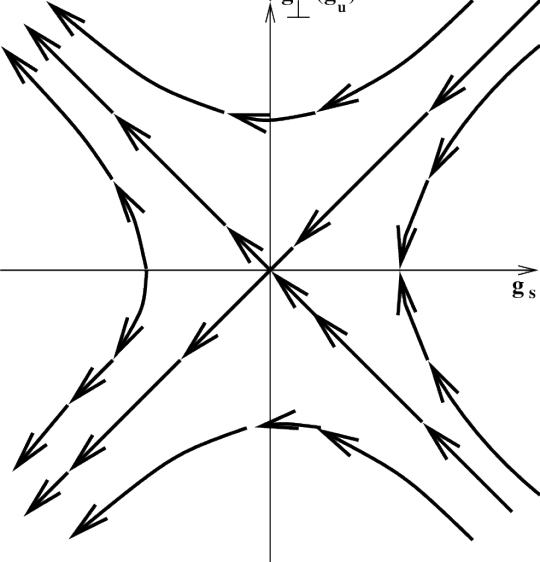
The concept of universality originated in the mid-20th century, particularly in the context of phase transitions in statistical physics. Physicists observed that vastly different physical systems—such as magnets near the Curie point and fluids near the liquid-gas critical point—exhibited strikingly similar behavior near their respective critical points. This was paradoxical because the underlying microscopic interactions in these systems were entirely different.
The resolution of this paradox came with the development of the renormalization group (RG) theory, primarily by Kenneth Wilson in the 1970s. RG provided a rigorous framework to explain how systems at different scales could be related through scale transformations, and how certain large-scale behaviors are invariant under these transformations. Universality emerged naturally from this framework: systems that flow toward the same fixed point in the space of physical theories under RG transformations exhibit the same critical exponents and scaling laws, regardless of their microscopic details. This laid the foundation for a deep understanding of universality and marked a turning point in theoretical physics.
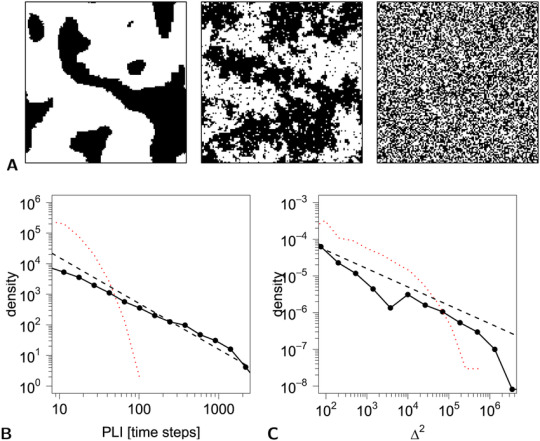
A central feature of universality is the classification of systems into universality classes. These are groups of systems that, despite differences in their microscopic structures or interactions, share the same set of critical exponents, scaling functions, and general behavior near criticality.
The primary determinants of universality classes are:
Dimensionality of the system – The number of spatial dimensions significantly affects the critical behavior of a system. For example, the Ising model in two dimensions has different critical exponents than in three dimensions.
Symmetry of the order parameter – The nature of the symmetry breaking involved in the phase transition plays a key role. The Ising model, with a discrete Z2 symmetry, belongs to a different universality class than models with continuous symmetries like O(N) (e.g., the XY and Heisenberg models).
Range of interactions – Systems with short-range interactions often belong to different universality classes than those with long-range interactions.
Conservation laws and dynamics – In dynamical systems, the conservation or non-conservation of order parameters (such as energy or magnetization) can define dynamic universality classes distinct from their static counterparts.
Examples of well-known universality classes include the Ising universality class (scalar order parameter with Z2 symmetry), the XY universality class (vector order parameter with U(1) symmetry), and the Heisenberg universality class (vector order parameter with SO(3) symmetry).
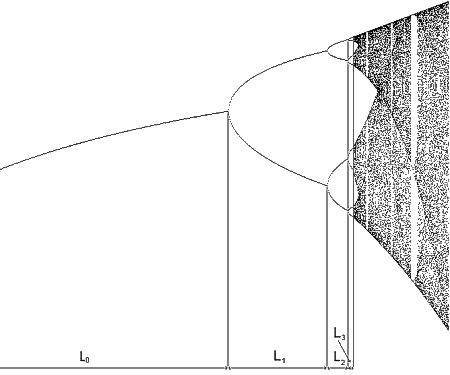
The renormalization group (RG) formalism is essential to the modern understanding of universality. It describes how physical systems behave under changes in scale, allowing for the systematic "coarse-graining" of microscopic details while retaining the large-scale features that determine macroscopic behavior.
The key idea in RG is that as one examines a system at increasingly larger scales, the effective parameters governing the system’s behavior flow under RG transformations. At critical points, these flows approach fixed points, which correspond to scale-invariant behavior. Systems that flow toward the same fixed point share universal properties—hence the emergence of universality.
In this context, critical exponents describe how physical quantities diverge near the critical point (e.g., specific heat, susceptibility, correlation length), and these exponents are determined by the properties of the RG fixed point, not the microscopic details of the system. For instance, the critical exponent β, which describes how the order parameter vanishes near the critical temperature, is the same for all systems in the same universality class.
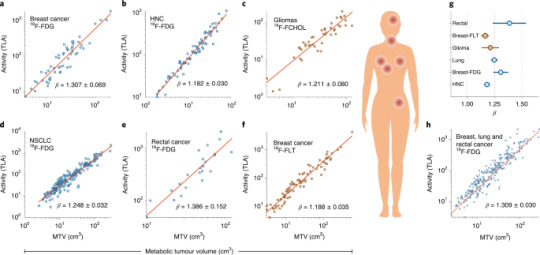
While the concept of universality originated in statistical mechanics, its implications extend far beyond that domain.
1. Dynamical Systems and Chaos
In the study of deterministic chaos, universality appears in the context of bifurcation theory and the transition to chaos. One of the most striking examples is the Feigenbaum constants, which describe the rate of period-doubling bifurcations in one-dimensional maps such as the logistic map. Regardless of the specific form of the map, the ratio of intervals between bifurcations converges to the same universal constant (~4.669), and the scaling behavior near the onset of chaos follows universal laws. This indicates that the transition to chaos in wide classes of dynamical systems exhibits universal features.
2. Quantum Field Theory and High-Energy Physics
Universality is also a key idea in quantum field theory (QFT), where it helps explain why effective field theories at low energies can be described using a limited set of relevant operators, despite the potential complexity of high-energy (UV) theories. RG methods show that low-energy phenomena are governed by universality classes characterized by the relevant operators at an IR (infrared) fixed point.
In lattice gauge theories and studies of quantum critical points, universality informs the scaling behavior of observables near quantum phase transitions, which occur at absolute zero and are driven by quantum fluctuations rather than thermal ones.
3. Computer Science and Algorithmic Universality
In theoretical computer science, a different kind of universality appears in the concept of computational universality, particularly in Turing completeness. A computational system (e.g., a Turing machine or lambda calculus) is said to be universal if it can simulate any other computational system. This form of universality is foundational to the theory of computation and underlies the universality of general-purpose computers.
Cellular automata also exhibit universality. For example, Conway’s Game of Life is computationally universal, meaning that it can simulate a Turing machine despite its simple local rules.
4. Percolation, Fractals, and Geometry
Percolation theory provides another domain where universality emerges. Near the percolation threshold, properties like the size of connected clusters exhibit power-law distributions characterized by universal critical exponents. These exponents depend only on the dimensionality of the system and not on the microscopic details of the lattice or geometry.
Fractals, which exhibit self-similarity and non-integer dimensions, are also associated with universality. The fractal dimensions of certain critical clusters (e.g., in percolation or the Ising model) are universal and can be related to the scaling laws governing the system.
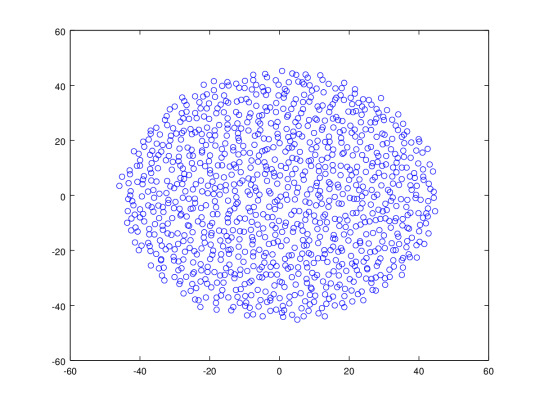
Although more speculative and less rigorously defined, analogs of universality have been proposed in biological and economic systems. For example, scaling laws in biological systems—such as the relation between metabolic rate and body mass (e.g., Kleiber’s law)—exhibit regular patterns across a vast range of organisms. Similarly, certain macroeconomic behaviors, such as power-law distributions in wealth and income or the scaling of urban infrastructure with population size, have been argued to reflect universal principles.
However, unlike in physics, the presence of complex, adaptive agents and feedback loops in these systems complicates the identification of precise universality classes or fixed points. Nonetheless, attempts to apply statistical physics and RG-like methods in these fields continue to be active areas of interdisciplinary research.

Universality in a formal mathematical sense often involves invariance under group actions, limit theorems, or fixed-point theory. For example:
Central Limit Theorem: One of the simplest manifestations of universality in probability theory. It states that the distribution of the sum of many independent random variables tends toward a Gaussian distribution, regardless of the underlying distribution, provided the variance is finite.
Random Matrix Theory: In the study of eigenvalues of large random matrices, universality appears in the distribution of spacing between eigenvalues, such as the Wigner-Dyson distribution. These distributions are universal across broad classes of ensembles, including those modeling nuclei, disordered systems, and even zeros of the Riemann zeta function.
Scaling Limits and Universality in Stochastic Processes: Brownian motion, the scaling limit of many discrete random walks, provides a classical example. Similarly, the Kardar-Parisi-Zhang (KPZ) universality class encompasses a wide range of stochastic growth models that, despite different dynamics, share the same large-scale statistical properties.

Universality challenges reductionist viewpoints by emphasizing that many macroscopic behaviors are insensitive to microscopic details. This has profound implications for how scientists model and understand complex systems. Rather than focusing on the exact microscopic state of a system, one can study representative models that capture the relevant symmetries and conservation laws to extract universal predictions.
It also exemplifies the power of abstraction and the importance of symmetry and scaling in nature. The idea that fundamentally different systems can exhibit identical critical behavior suggests that there are deep organizing principles underlying complex phenomena.
Furthermore, the concept has epistemological significance, influencing how knowledge is structured and how laws of nature are interpreted. It bridges the gap between the particular and the general, providing a unifying framework for diverse phenomena.
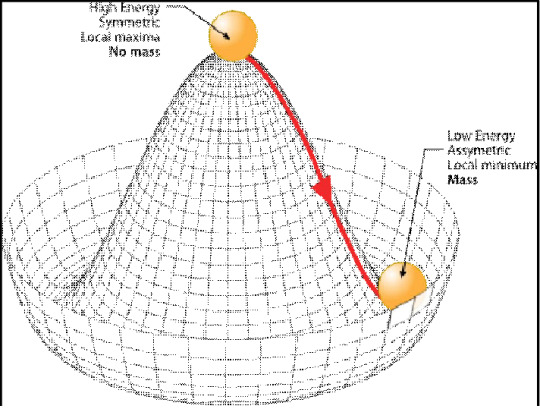
Universality is a cornerstone of modern science, offering a window into the fundamental structure of complex systems. From phase transitions and critical phenomena to dynamical chaos, quantum fields, algorithmic computation, and beyond, universality reveals the deep and often surprising regularities that transcend specific details. Its discovery and formalization represent one of the most profound insights in 20th-century physics, with ongoing implications for a broad range of disciplines in the 21st century. As science progresses, the principle of universality continues to guide our understanding of emergent behavior, scale invariance, and the interconnectedness of nature.
#universality#critical phenomena#scale laws#renormalization group#fractal geometry#chaos theory#complex systems#emergence#systems philosophy#interconnectedness#science thoughts#deep physics#mathematical beauty#physics aesthetic#theoretical physics#quantum field theory#computational theory#algorithmic aesthetic#symmetry breaking#phase transitions#feigenbaum constants#science lovers#philosophy of science#statistical mechanics#patterns in chaos#universal laws#scientific philosophy#epistemology
0 notes
Text
looking at next month's schedule and between the end of 7-12 and the wishing lantern event it's like

February is officially RIDDLE MONTH, brace yourselves to be absolutely blasted into ashes everybody

#art#twisted wonderland#twisted wonderland spoilers#twisted wonderland episode 7 spoilers#twisted wonderland book 7 spoilers#twisted wonderland episode 7 part 12 spoilers#twisted wonderland book 7 part 12 spoilers#negai no lantern#gif warning#gifs that have memorized all 800+ rules and expect no less from you warning#sorry cater and azul i hope you have very happy birthdays but i'm going to actually explode#just laying on the floor and thinking about rapunzel-themed event feat. riddle#and ESPECIALLY right after we get his big dream sequence wherein he fistfights his deep-seated personal issues#and i'm STILL processing trey's dream and what it says about his friendship with riddle especially like#i'm#i just#okay hold on i gotta distract myself by looking at the other lantern boys#and their beautiful long flowing tresses that defy physics to blow dramatically behind them#whoever keeps putting jack in the shimmery sparkly delicate floaty chiffon events is my personal hero#his card is incredible. he looks like a perfume ad.#he wants us to know that you can live a rugged outdoorsy lifestyle and still have an undertone of delicate floral notes#god. everyone looks amazing this event is going to be amazing#and like...it probably isn't going to go too deep because silly event versus main story and all#but just the act of casting riddle as the center is still just so#like#i gotta go lay on the floor some more
7K notes
·
View notes
Text
I just emotionally knee-capped a friend on accident.
We were talking about kink dynamics in our writing and she confessed she didn’t understand the appeal of brats or what you’re really supposed to get out of bratting. Like she really likes Nathan’s soft dom dynamic but she confessed if Vlad turns into a little shit for the sake of it because he “enjoys being annoying” she’d probably go off him as a character and I had to pause and be like, you really think bratting is just about being annoying?
Yes she did. Then went on to talk about the kind of cookie cutter het-romances where attraction is built on annoying people (I’m sure it exists in queer romance too I’ve just thankfully never read it.) and how she can’t stand that kind of thing which is fair because same.
But no, I said, that’s not the bratting dynamic I’m building for Vlad in Phangs.
So what dynamic was I going to explore?
“Well, multiple aspects really, but for Vlad, it’s the certainty of knowing you’re in a safe space where you can say “no” to someone in a position of authority and know they’ll still love you afterwards.
That and funishments. Can’t go wrong with a good old fashioned span—are you fucking crying?”
Woops.
#hunger pangs meta#it’s kind of funny having ‘kink’ conversations with friends who think kink is entirely physical#and then blowing them out of the water#like hm#yeah no#like it doesnt have to be that deep#but sometimes it is
3K notes
·
View notes
Text
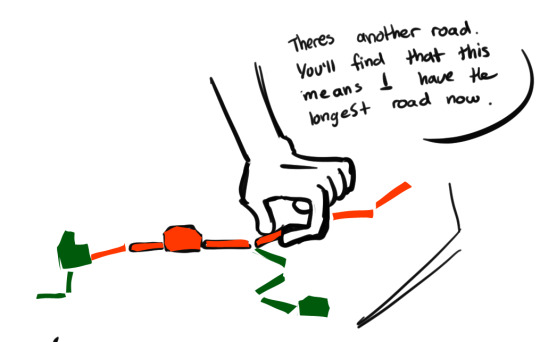


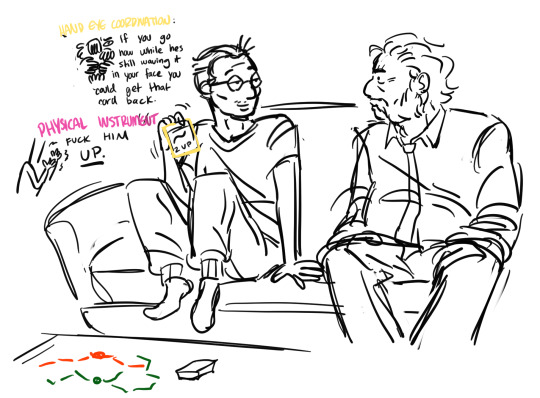



eat up, you animals. whats some playfighting among friends am i right? finished my big exam so this is my reward to myself.
#disco elysium#kim kitsuragi#harry du bois#harrykim#suzerenity seemed like catan to me so i just made them play that instead lol#physical instrument containing the deep dark internalised homophobia#physical instrument: ok we can wrestle as bros but when you start blushing and giggling i draw the line#i was going to make them kiss but i need to stay true to the chain of events in my head#maybe some day if you ask nicely
627 notes
·
View notes
Text

you know?
#garak#ds9#georg#elim garak#deep space nine#me: transfemme Garak is very important to me#also me: only makes meme posts about transfem Garak#forgive me i'm exhausted physically and existentially
836 notes
·
View notes
Text
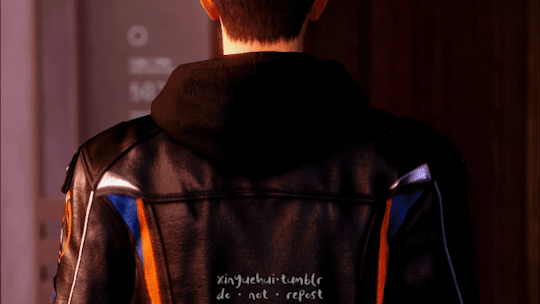


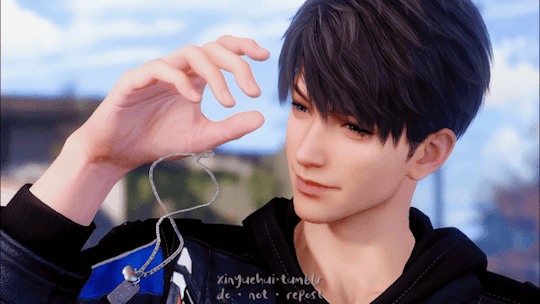


Why the long face?
#love and deepspace#恋与深空#love and deep space#xia yizhou#caleb#夏以昼#dailygaming#dailyvideogames#gamingnetwork#videogamepoc#gamingedit#3d animation#video games#*5#otome#otome game#after seeing that crazy transition in the trailer i decided to make my own transitions 😭😭#no longer soft 🥺 EVIL NOW 😈#i know theyve tweaked his model slightly but its crazy how subtle facial expressions changes everything#the warm lighting before in contrast of the cold lighting that sharpens his features now (also sharpen physically bc better graphics lol
271 notes
·
View notes
Text










hinadam week 2025 DAY FIVE - gift giving/touch/words of affirmation
i did all of them. bc i'm insane <3
#hinadam#hinadamweek2025#danganronpa#i wish my handwriting didn't come out looking so wonky?? crooked?? DEEP SIGH#gundham tanaka#hajime hinata#ALSO FOR THIS PROMPT while i was making it i picked these three bc-#hajime leans more towards giving gifts to show affection (bc obvious protag reasons lol) and i think gundham would lean more towards words-#due to his large + eccentric vocabulary and i think he would be more comfortable conveying his feelings this way-#even if you don't know wtf he's talking about lmao (or maybe he's doing it like that on purpose??? omg)-#and the physical touch is where they can meet in the middle :) as awkward touch starved fools :)#neither of them are used to it but it's something they can work on together :))) peace and love 💖#sdr2#ari art#gundhamronpa
350 notes
·
View notes
Text
I need to be hugged. I need to be embraced, and wrapped in warm arms, my head against their chest, listening to their heartbeat. Under the thick, soft bedsheets, my warm breath grazing their neck, and their nose buried in my hair. Making light circles on their collarbones, lifting my hand to play with their hair. I need to feel their breath on my ear, while whispering sweet, loving words to eachother, only meant for our ears. Simply drifting in the warmth and sinking into eachother, as we bask in the moment
#*sighs in deep yearning*#i really want physical touch sometimes#even though i don't like it#queerplatonic#queer platonic relationship#aroace#aroace lesbian#aromantic#asexual#ramblings#my post
258 notes
·
View notes
Text

Trials and tribble-ations deleted scene
#I drew this as fast as physically possible. they’d do frauds and experimental surgeries together#art#star trek tos#star trek the original series#leonard mccoy#bones mccoy#ds9#star trek deep space nine#star trek ds9#julian bashir
2K notes
·
View notes
Text
Saw the director of Addicted Heroin Thailand had posted this on his Facebook account:

This man looked at the show that was the tipping point of the first big anti-gay censorship wave in China in the 2010s, and decided to remake it and intentionally self-censor, just to see if he could attract the "Chinese BL is superior because it doesn't rely on kisses or NC scenes to show the emotions" audience to Thai BL?

I am so mad about this.
#addicted heroin th#addicted heroin thailand#addicted heroin the series#bl meta#fandom meta#honestly i don't care if this is justifcation after the fact or if it was what he set out to do#either way this rhetoric horrifies me#What a deep misunderstanding of the importance of the series we have had from China during this period#for pushing against censorship rather than voluntarily enforcing it where it doesn't exist#also what disrespect to the source material and the original series#to imply that the physical affection between the characters cheapens their romance or their acting in some way#and honestly i can't get over how utterly his plan has backfired#because the censorship itself has been the biggest barrier to me enjoying or recommending this show#typed so that i can stop thinking it
242 notes
·
View notes
Text
I want to see jason and cass forced to work together in a long and messy run. Jason isn’t killing people but not because he believes it’s wrong, he’s bending his principles because the personal costs were too high. Cass will not, cannot bend, and damn the costs. Her reasons for it are laughably unconvincing to him. She has worked so so hard to have a life for herself. Jason is pretty clearly suicidal. The man who adopted each of them would be unrecognisable to the other. She’s held up as the golden standard, he’s the grim cautionary tale. She’s the superior combatant. He’s a jack of all trades. Neither one has any clue how to be normal.
They should despise each other and be forced to solve mysteries together.
#i want it to be an excrutiating character deep dive#full of detectiving and high stakes shenanigans#with ample oppprtunity for both to shine#and annoy the other as much as physically possible#death is too horrible to accept is not an argument jason can take seriously#but neither is ‘i can be the monster who accepts that price’ ever going to be acceptable to cass#jason todd#red hood#cassandra cain#black bat#orphan#dc#batman
948 notes
·
View notes
Text

Yusuke: 120%
Detail and source after the cut...
comms open 🎨


#yusuke#yu yu hakusho#yyh#yyh fanart#yusuke urameshi#fanart#illustration#digital art#art#artists on tumblr#rewatching the fight with toguro at the end of the dark tournament was interesting timing#feeling yusuke's weariness as I'm doing a deep review of how physical abuse and violence affected my developmental process growing up#and how it shapes the nervous system tissues and even bones#the fight itself felt like an initiation by parental figures... father toguro and mother genkai#can growth ever be possible without pain?
81 notes
·
View notes
Text
Hey idk who needs to hear this, but if you have chronic pain, you’re not a baby or weak or a pussy or whatever else you’d like to call it for crying about it
It’s okay to cry, crying is a way to relieve pain, it’s a natural response to stress and pain is DEEPLY distressing. I feel like people (even people with chronic pain) expect you (and you expect yourself) to just get over it. Deal with it. It happens all the time, so why bother crying? What good will tears do?
But that doesn’t help— holding it in. It’s healthy to cry, it’s a method of communicating in the most basic and natural way. It’s a way for your body to say “this REALLY is upsetting me!” And that’s okay! It’s okay to be upset and it’s okay if crying is YOUR response to being upset. You’re not weak, you’re not being a baby, you’re stressed and distressed from the emotional aspects of pain and it’s okay to show it!
I know, I KNOW, crying is uncomfortable, vulnerable, even upsetting because in those moments when you are crying it’s usually because it’s reached more than what you can handle at that moment, it can be overwhelming, draining. But that doesn’t make it unhealthy. You’re human, not an emotionless machine— OF COURSE pain will make you upset. And you’re not weak for exhibiting behaviors that clearly correspond with something that is meant to be distressing. Pain is not normal, it’s there as a warning, which is WHY it’s so deeply upsetting.
You’re not weak ily muah muah muah
#chronic pain#disabled#chronic illness#cripple punk#arthritis#ehlers danlos syndrome#chronically ill#physical disability#deep infiltrating endometriosis#endometriosis#sciatica#sacroiliitis
126 notes
·
View notes
Text
Fiber arts update: Embroidery (derogatory)

Wedding gift for my lil' sis (who saw something like this on etsy, balked at the price and immediately went "hey I know some fucking idiot who'll do it for free" and then the idiot did in fact do it for free)
To my deep and lasting horror I'll have to do this again because my sister does, indeed, have two feet.
Also I'm helping out at an academic conference this week and my job is mainly just "sitting around looking like someone who would be able to give directions to places if asked" so I did this on the clock while everyone was attending lectures. I guess there's some poetic justice in bringing the worst project you have to something like that.
#embroidery#guardy's fiber arts tag#I don't usually embroider tbh#love the way it looks#but doing it myself Does Not Spark Joy#It sparks physical pain and a deep desire to stab someone#(also to be clear: by doing this I'm getting out of buying a wedding gift#so yes; technically 'for free'#but also... well you get the idea)
214 notes
·
View notes
Text

fffff. loop version?
#bananart#isat#in stars and time#isat spoilers#isat loop#isat siffrin#mmph. one of my fav parts about this au is the ideas thatcan branch off of it#loop like. being siffrin. and also being siffrin without their cloak.#a selkie without their seal skin is basically set to live a life of pain and misery until they get it back.?#since they’re unable to shift into their seal form#and loop once again having no sealy cloak in sight. yyyeahgh.#i wonder how deep their skin crawled while warching siffrin in their seal skin. even having the option to be free#isat selkiefrin au#<- forgor <3#anyway he would definitely allow them to borrow it and they would be so happy happy joy joy while siffrin’s just. give it back soon pleasdg#the white zapperoons are mostly for physical distinction btw. it’s just a lop thing
138 notes
·
View notes
Note
Make harebell and first jam kiss

sure..
@chibisproductions
#alli answers#harejam#harebell cookie#first jam cookie(alli oc)#crk oc#Did I mention that first jams love language is physical touch#Anyways when first jam loves she loves very deep be it romantic or platonic cases !
81 notes
·
View notes